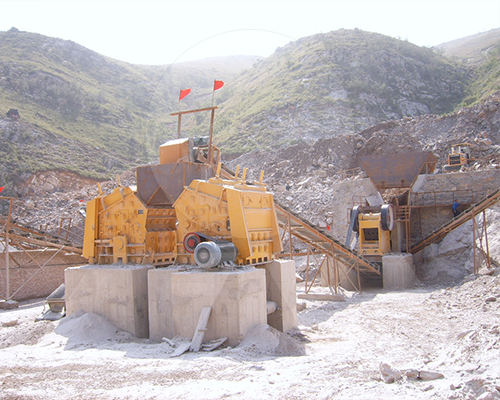Feasibility of Using an Impact Crusher for Fly Ash and Slag
Managing and recycling industrial byproducts like fly ash and slag is a growing challenge for power plants and steel mills. While these materials have traditionally been treated as waste, their potential as a source of valuable aggregates and fillers is immense. A key question for companies looking to capitalize on this opportunity is whether an impact crusher is a suitable and effective machine for the job.
This article examines the feasibility of using an impact crusher for fly ash and slag, outlining the technical benefits, practical considerations, and challenges of this specific application.

Understanding the Materials: Fly Ash and Slag
To determine the right crushing equipment, we must first understand the properties of the materials:
- Fly Ash: A fine, powdery byproduct of coal combustion. When agglomerated or mixed with other materials, it can be processed into a usable, aggregate-like form. Its porous structure makes it brittle.
- Slag: A glassy, granular byproduct of metallurgical processes. Slag is often hard, but its internal structure can be brittle and porous, making it a good candidate for impact-based crushing.
The key takeaway is that both materials, while different, share a common characteristic: they are more brittle than hard rock like granite, which makes them highly responsive to the shattering action of an impact crusher.
Why an Impact Crusher is a Viable Solution
The unique working principle of an impact crusher makes it exceptionally well-suited for fly ash and slag processing.
- Ideal Crushing Principle: The crusher uses a high-speed rotor with hammers that powerfully strike the material. This impact action shatters the porous and brittle particles of fly ash and slag, reducing them to the desired size. This method is far more efficient on these materials than the compression method used by jaw or cone crushers.
- Produces High-Quality, Cubical Product: The shattering action of the impact crusher tends to produce a uniform, cubical-shaped aggregate. This is a significant advantage, as cubical particles are highly valued in the construction industry for their ability to create stronger, more durable concrete and road surfaces.
- Effective for Mixed Materials: In many cases, slag or fly ash is mixed with other waste concrete. The impact crusher can handle these mixed materials effectively, and the high-speed impact helps to break up the different components. A magnetic separator can then be added to the production line to efficiently remove any ferrous scrap metal for recycling.
Key Technical Considerations and Challenges
While the impact crusher is a highly viable option, its successful implementation requires careful attention to a few factors:
- Dust and Moisture Control: Fly ash is a fine powder and can create significant dust. Conversely, if too wet, the material can become sticky and clog the crusher. Implementing dust suppression systems (e.g., water sprays) and ensuring proper material handling is crucial.
- Wear on Hammer Blows: Even though fly ash and slag are less abrasive than granite, the constant impact will cause wear on the crusher’s hammer blows and impact plates. Regular maintenance and a stock of wear-resistant parts are essential to minimize downtime.
- Final Product Specification: The rotor speed and the gap between the hammers and impact plates must be carefully calibrated to produce an end product that meets the specific size and quality standards required for its intended use (e.g., road base, concrete filler).
Conclusion
The impact crusher is a powerful and highly viable solution for processing fly ash and slag. By leveraging its unique ability to efficiently break down brittle, porous materials and shape them into a high-quality, cubical product, companies can turn an environmental liability into a profitable and sustainable resource. For anyone in waste management, recycling, or the production of building materials, the impact crusher is an essential tool for creating a circular economy.
- > Aplicación de Trituradoras Móviles para Basalto, Caliza y Cuarzo en la Industria de Agregados
- > The Application of Jaw Crushers for Coal Crushing in Indonesia
- > Application of Jaw Crushers in Primary Crushing Operations in Mining
- > Efficient Spiral Sand Washer for Gravel, Rock, and Ore
- > Cone Crusher in Metal Ore Beneficiation Production Line
- > Innovative Mobile Crusher with 200 Tons Per Hour Capacity
- > Mobile Jaw Crusher: What Types of Rocks Are Suitable for Crushing?
- > The Application of Jaw Crushers in Gold Production


Online




Message
